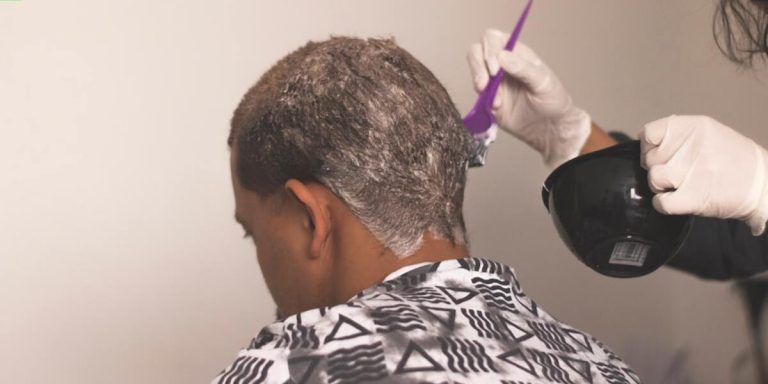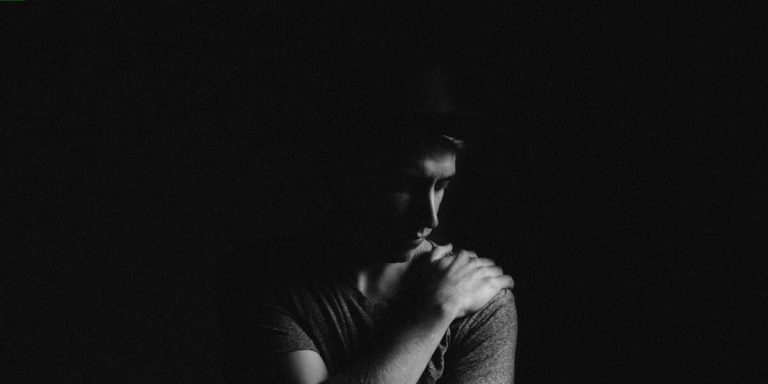Best Postpartum Hair Loss Treatment: A Deep Dive into Effective Solutions
Many new mothers find experiencing postpartum hair loss alarming. While common, it’s critical to find the best treatment to restore self-confidence and promote healthier hair. Your hormones have caused strange changes during and after pregnancy, but with proper care and solutions, you’ll soon regain control over your hair.
The reason why this experience is so shocking for most women lies in its unexpectedness as well as sudden onset about three months following childbirth. Knowledgeability on effective treatments helps create an action plan tailored specifically towards individual needs based on unique circumstances such as medical history or lifestyle choices which contribute significantly towards achieving desired results optimally.
Did you know?
Contrary to popular belief, postpartum hair loss is a temporary condition caused by hormonal changes; according to the American Pregnancy Association, it affects between 40-50% of women within three months after delivery.
Understanding Postpartum Hair Loss: Causes and Timeline
Postpartum hair loss, also known as the sudden shedding of hair following childbirth, affects many new mothers. This condition typically starts two to three months after delivery and may persist for up to six months. It mainly results from hormonal changes; elevated estrogen levels during pregnancy prolong the growth phase of hair follicles, resulting in thicker, more lustrous hair. After childbirth, these hormone levels plummet, leading to more hairs entering the resting phase before they shed.
The Hormonal Shifts Triggering Hair Shedding After Childbirth
Childbirth is a profound experience, often followed by significant hormonal changes that impact every facet of a new mother’s life. One common but less-discussed phenomenon associated with this biological process is postpartum hair loss.
After delivering your bundle of joy, your hormone levels abruptly decline. This change causes the hairs that were stuck mid-growth during pregnancy to enter their ‘resting’ phase (telogen). About two to three months after delivery, these resting hairs begin falling out en masse as they make way for new growth (anagen cycle). This marks the onset of postpartum alopecia or ‘baby blues for your tresses.’ If unprepared, this sudden increase in hair loss can be alarming as an average woman might lose up to 500 strands per day compared to the normal rate of around 100.
Fortunately, we now have unparalleled insights into resolving such issues thanks to advances in science. While no single “best” treatment exists due to individual variations, the following widely recognized solutions have shown promising results:
1) **Topical Minoxidil**: FDA-approved minoxidil stimulates hair regrowth while still being safe for nursing mothers.
Recognizing Normal vs. Excessive Hair Loss in the Postpartum Period
The postpartum period is often marked by a phenomenon known as ‘baby blues’. But for many new mothers, these baby blues can extend to the sudden and alarming loss of hair – commonly referred to as Postpartum Hair Loss. Understanding what constitutes normal versus excessive hair shedding in this time frame could be your first stride towards finding the best postpartum hair loss treatment.
Usually, it’s quite common for women to experience some degree of hair thinning after childbirth due to hormonal fluctuations. On average, we lose about 100 strands per day which gets replaced naturally over time. However, when you start noticing copious amounts on your pillowcase or clogging up the shower drain daily without any noticeable regrowth – that’s when things might tend more towards hyper shedding or Telogen Effluvium (TE).
A proper diagnosis from an experienced dermatologist will help differentiate between typical changes and severe conditions such as TE where hairs enter their resting phase simultaneously causing widespread thinning across whole scalp areas rather than just individual patches. It typically presents within three months following a triggering event but should subside once balancing hormones stabilize again.
If left undiagnosed or untreated though, TE can lead not merely to cosmetic concerns but also affect physical well-being leading one into cycles of stress thereby further propelling unfortunate bouts of consecutive hyper shedding episodes.. Thus recognizing signs early becomes critical in curbing progression while initiating suitable remedial measures promptly would invariably ensure better recovery prospects.
Topical Treatments and Natural Remedies for Managing Postpartum Alopecia
Topical treatments have emerged as a popular go-to solution for managing postpartum alopecia, given their direct application method and fast-acting results. Products such as minoxidil are commonly used due to their FDA-approved status and effectiveness in promoting hair regrowth. However, it’s important to consult your healthcare provider before starting any new treatment regimen.
This is because every individual has unique needs and what works best for one may not work the same way for others.
On another note, natural remedies hold an allure that’s hard to resist when dealing with postpartum hair loss. The appeal lies in the holistic approach they offer along with minimal side effects – a feature highly valued by new moms who desire non-invasive treatments while breastfeeding or caring for newborns.
Aloe Vera gel is quite renowned in this regard — being rich in proteolytic enzymes helps stimulate dormant hair follicles, encouraging healthier growth patterns over time. Similarly compelling are nourishing oils known widely across different cultures like coconut oil offering deep moisturization plus strengthening benefits or castor oil fostering thicker strands thanks to its high ricinoleic acid content.
Remember though that patience plays an integral role here since these topical solutions require consistent use over months before substantial changes become visible against postpartum alopecia; covering both extreme ends of spectrum from medically approved topicals up till herbal alternatives showcases how varied options on hand truly are allowing each woman find her personal ‘best’ within realm of available therapies!
Evaluating the Efficacy of Minoxidil for New Mothers
Minoxidil, renowned worldwide for its breakthrough in hair regrowth treatments is an over-the-counter topical application. It’s hailed as a potential answer to tackling postpartum alopecia effectively.
The best postpartum hair loss treatment should not only be safe but also effective and user-friendly. Minoxidil cleverly checks all these boxes making it a go-to choice amongst new mothers grappling with substantial hair fall after childbirth.
But what makes Minoxidil so robust against this dreaded type of hair thinning? The magic lies within the formula that aids dormant follicles into an active growth phase. This transition pushes more hairs onto your scalp, thereby reducing visible bald spots or patches caused due to hormonal imbalances during pregnancy.
However, using minoxidil involves patience and consistency since results can take anywhere from three months up to six months based on individual cases. Always remember that discontinuing use may also cause any newly grown locks to shed off – hence regular usage even after signs of improvement is advised.
Moreover, there could be minor side effects like itching or dryness; however they generally subside soon while providing essential nutrition vital for healthy tresses along the way.
For those who prefer natural remedies alongside traditional ones might find rosemary oil beneficial thanks largely due its proven efficacy similar to minoxidil itself without side effects often associated with chemical content present in some standard products currently available commercially .
Harnessing the Power of Essential Oils and Nutrient-Rich Serums
Harnessing the power of essential oils and nutrient-rich serums can be a potential game-changer when it comes to coping with postpartum alopecia. In 2023, there’s been an increased focus on natural remedies for hair loss management due to their low-risk profile and effectiveness over time.
Essential oils have garnered much attention as research has highlighted their benefits in supporting scalp health, encouraging new hair growth, and reducing inflammation that often contributes to thinning hair or baldness.
Lavender oil is one choice favored by many. Known for its calming properties, this fragrant oil also stimulates blood circulation beneath the skin when massaged gently onto your head. This improved blood flow carries nutrients directly to your follicles which can invigorate dormant ones leading them back into their productive phase again.
Nutrition and Lifestyle Adjustments to Combat Postpartum Hair Thinning
Understanding the gravity of postpartum hair thinning requires a multidimensional approach, with nutrition and lifestyle adjustments playing crucial roles. After childbirth, hormonal changes can dramatically affect your locks’ health and volume. Fortunately, there are proven methods to help restore this balance effectively.
Turning first towards the nutritional aspect – it’s commonly underestimated how consuming nutrient-rich food can significantly impact one’s overall hair health. A diet abundant in vitamins such as Vitamin E & B complexes, minerals like iron and zinc is ideal for restoring strength while stimulating regrowth after delivery. Incorporating items like eggs, spinach or other leafy greens into your meals will go miles toward improving conditions from root to tip.
To combat postpartum hair loss effectively:
- Implement positive lifestyle changes and good nutrition in parallel.
- Engage in regular exercise to promote circulation and blood flow to the scalp, ensuring follicles receive vital nutrients.
- Reduce stress through mindfulness activities, which can improve hair growth by managing cortisol levels, also known as the “stress hormone”.
- Maintain an active lifestyle and pay attention to your diet as a cornerstone strategy against postpartum thinning.
Incorporating Vital Nutrients into Your Diet for Hair Regrowth
Postpartum hair thinning can be a disheartening experience for many new mothers. Adjusting your diet to include vital nutrients is a supportive step towards promoting hair regrowth, thereby serving as one of the best postpartum hair loss treatments.
Firstly, protein-rich foods are critical in strengthening your existing strands and stimulating new growth. Include lean meats like chicken breast, fish or opt for plant-based proteins such as lentils and chickpeas if you’re vegetarian or vegan.
Thirdly, iron plays an essential role in preventing further shedding after baby’s birth; hence eating leafy greens along with vitamin C rich fruits could boost its absorption effectively. Items like spinach combined with orange segments serve not only nutritional purposes but also adds variety on plates.
The fourth element of focus should be B-vitamins which assist on multiple fronts including blood cell production (essential for proper nutrient delivery), fortifying roots & enhancing overall thickness – whole grains and eggs are excellent sources here.
Stress Management Techniques That Support Healthy Hair Growth
Stress impacts your entire body, including your lovely locks. High-stress levels can trigger hormonal imbalances leading to excessive hair shedding and slower regrowth rate – something you don’t need when already encountering postpartum changes.
One effective method is exercise; it decreases cortisol levels responsible for stress while increasing happy endorphins. A brisk walk around the neighborhood or a quick at-home yoga session will suffice – remember consistency matters more than intensity.
Meditation also offers extensive benefits for those battling with anxiety-induced symptoms contributing to thinning tresses. Regularly practicing mindfulness boosts emotional well-being, lowers tension, and by extension promotes healthier scalp conditions favoring prolific follicular activity.
Conclusion
In a nutshell, embracing the best postpartum hair loss treatment that resonates with your specific needs is indeed paramount. The aftermath of childbirth should not steal your joy or compromise how you perceive yourself in any way! You’re strong and beautiful—and deserve to flaunt that through every strand on your head.
Do remember, patience coupled with deliberate self-care makes an unbeatable combo for combating postpartum hair shedding. For more enlightening content about hair loss treatments and valuable insights into regaining luscious locks after pregnancy, feel free to explore further within our website. Knowledge is power—equip yourself as you embark on this journey towards reclaiming healthy tresses!







